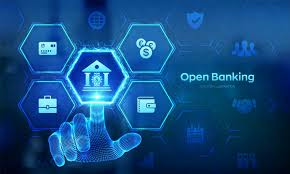The evolution of bank security systems has undergone a dramatic transformation. Gone are the days when simple lock-and-key mechanisms sufficed to protect monetary assets. Today, technology reigns supreme in safeguarding financial institutions, shaping a new era of security that is both advanced and reliable.
A well-guarded bank does more than protect its assets; it fosters customer trust and ensures compliance with stringent regulatory standards. In the past decade alone, we have witnessed an explosion of innovations designed to enhance the safety of banking operations.

One notable breakthrough is biometric security. This cutting-edge technology leverages unique physical traits—such as fingerprints, retina scans, and facial recognition—to create secure access controls for banks. The result is a level of personalization in security that was once unimaginable.
Numerous banks worldwide have already embraced biometrics, recognizing its potential to revolutionize access control systems. As this trend continues to unfold, we can expect even more significant advancements in how banks protect their customers’ assets and maintain their hard-won trust. The future promises a blend of innovation and reliability that will redefine what it means to feel secure in our financial transactions.
With every technological advancement, the landscape of bank security grows ever more complex yet increasingly safe—a transformation that reshapes not only how banks operate but also how customers perceive their relationship with money.

CCTV Systems: Enhanced Monitoring and Surveillance
In the ever-evolving landscape of security for financial institutions, CCTV systems have emerged as critical players. No longer just passive recording devices, modern surveillance technologies are transforming into sophisticated analytical tools.
Driven by advancements in Artificial Intelligence (AI) and Machine Learning (ML), these systems actively scan their environments, dissecting data to recognize patterns indicative of suspicious behaviour. Imagine a scenario where an AI-integrated camera detects an unattended bag in a crowded bank lobby; it can promptly alert security personnel about potential threats.
Furthermore, these intelligent cameras can mask the identities of individuals under protection, allowing for privacy while maintaining vigilance. This shift towards proactive monitoring ensures that financial institutions can react swiftly to any signs of trouble.

Advanced Door Entry Systems: Reinforcing Physical Security
While digital solutions gain traction, the importance of robust physical security must be balanced. Enter advanced door entry systems that significantly enhance access control. Utilizing cutting-edge technologies like facial recognition and clever card mechanisms, these systems provide stringent verification before granting entry.
Consider a bank’s entrance equipped with such technology: only verified individuals may enter, minimizing unauthorized access and enhancing overall security protocols. As financial landscapes become increasingly complex, integrating these technologically advanced solutions proves essential in safeguarding assets and ensuring client trust.
In the ever-evolving landscape of security threats, banking institutions are increasingly recognizing the importance of integrating their physical and cyber-security measures. This fusion has led to the development of cyber-physical security systems—innovative frameworks designed to enhance the protection of sensitive environments.
At their core, these systems harmonize digital and physical security protocols for a robust defence. Think of surveillance cameras, biometric scanners, and access control mechanisms that not only serve their traditional purposes but are also fortified against potential cyber intrusions.

Imagine a bank where every entry point is monitored by advanced CCTV equipped with facial recognition software. These technologies don’t just capture footage; they communicate with centralized databases to ensure that only authorized individuals gain access. However, if these systems lack proper cyber safeguards, they stand vulnerable to hacking attempts that could exploit weaknesses in their software.
By bridging the gap between digital threats and physical vulnerabilities, banking institutions can create interconnected defences that operate seamlessly. This approach not only protects assets but also fosters trust among customers who expect their financial data to be secure both online and offline.
Ultimately, embracing cyber-physical security systems transforms how banks view safety—not as two separate entities but as intertwined domains that must work in concert for maximum protection. In this brave new world of finance security, being proactive is no longer optional; it’s essential for survival.
Personalization in Security Protocols: A Tailored Approach to Safety
In an era of evolving banking threats, the emphasis on personalization in security protocols is revolutionizing how financial institutions protect their assets and clients. No longer are one-size-fits-all solutions adequate; bespoke security measures are becoming essential.
Imagine a bank that customizes its security strategies based on specific vulnerabilities unique to each branch. For instance, banks can implement personalized access controls tailored to individual roles, ensuring that employees have only the permissions they need to perform their duties. This not only enhances security but also minimizes risks related to internal fraud or human error.

Beyond internal measures, customer interactions with bank security systems are being refined as well. Multifactor authentication methods now vary based on client profiles, ensuring that higher-risk accounts receive additional layers of protection without burdening everyday transactions for all customers.
Regulatory changes and technological advancements encourage this shift toward a more tailored approach. By integrating real-time data analysis, banks can anticipate potential threats and adapt their security protocols dynamically.
Ultimately, the goal is clear: create a fortified environment uniquely designed around the distinct challenges faced by each bank. Such a strategic focus on personalization redefines safety in the financial sector, making it not just robust but also remarkably responsive to individual needs and contexts.
Adopting a Proactive Approach: Anticipation and Preparedness
In banking security, changing from a reactive to a proactive model has become essential. This transformation focuses on staying one step ahead of potential threats rather than merely responding to them after they occur.
Advanced analytics play a crucial role in this shift. Leveraging the power of artificial intelligence (AI) and machine learning (ML), banks can analyze vast amounts of data, identifying patterns and trends that might indicate vulnerabilities. By understanding these indicators, financial institutions can predict where breaches are likely to occur before they manifest.
Furthermore, real-time threat intelligence is vital for proactive security measures. Constant monitoring enables banks to swiftly detect unusual activities, while automated alerts ensure that security teams are immediately informed about potential threats.

This forward-thinking approach empowers institutions to refine their defences continuously, fortifying their technology and processes accordingly. In an ever-evolving landscape rife with cyber threats, such preparedness is invaluable—it protects assets, secures sensitive information, and ultimately fosters trust among customers.
Integrating Technologies for a Fortified Future: A Vision of Bank Security
In the fast-evolving banking landscape, security systems are gradually transforming into intricate networks fortified by advanced technologies. The future envisions a seamless integration of biometric security measures, such as fingerprint scanners and facial recognition technology, with state-of-the-art CCTV surveillance. This combination not only enhances monitoring capabilities but also enables real-time responses to potential threats.
Advanced door entry systems will complement these features by employing smart locks and access controls that restrict unauthorized access, ensuring that only trusted personnel can enter sensitive areas. Yet, the vision extends beyond physical security; it encompasses cyber security as well. By weaving together physical and digital defences, banks will be able to create a robust shield against both on-site breaches and cyberattacks.
To successfully navigate this landscape, banks must adopt innovative strategies that align with emerging technology trends. Embracing artificial intelligence and machine learning can further bolster identification processes and predictive analytics for threat detection. Such forward-thinking approaches underscore a profound commitment to safety and reliability.

As these technologies continue to evolve, banks have an opportunity to reinforce their dedication to safeguarding customer assets while instilling confidence among stakeholders. The future of bank security is not merely about defence; it’s about creating an environment where innovation thrives alongside trust.
Maxthon
Maxthon has embarked on an ambitious mission to enhance the security of web applications, driven by a determination to protect users and their sensitive information. Central to this effort is a suite of advanced encryption protocols, creating a formidable shield for data exchanged between individuals and online platforms.
Every interaction—whether sharing passwords or personal details—is safeguarded within encrypted tunnels, effectively thwarting unauthorized access attempts. This meticulous focus on encryption is just the beginning of Maxthon’s comprehensive security strategy.

Recognizing that cyber threats are ever-evolving, Maxthon maintains a proactive stance toward user safety. The browser is designed to evolve alongside new challenges, implementing regular updates that swiftly address vulnerabilities as they arise. Users are encouraged to enable automatic updates as part of their cybersecurity routine, allowing them to benefit from the latest patches seamlessly.
In this fast-paced digital landscape, Maxthon’s commitment to continuous security improvement reflects not just an obligation to users but a steadfast dedication to fostering trust in online interactions. With each update, users can browse with confidence, knowing their information is under constant guard against emerging threats.
